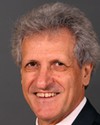Thank you, Yaprak.
Mr. Chair, you have already introduced our other members, who gracefully accepted to replace Martin Eley at the last minute.
Our appearance today coincides with the international high-level safety conference that Mr. Laframboise mentioned, which is being held this week at the International Civil Aviation Organization headquarters in Montreal. I was there yesterday and so was the minister.
Our purpose at the conference is to help enhance aviation safety at a global level, promote the international recognition of the Canadian civil aviation program, and engage in concurrent aviation safety issues with our international partners.
The conference began yesterday and the minister addressed the delegates at the end of the first day of talks. The minister, Mr. Baird, confirmed his commitment to aviation safety and security. He also underscored the importance of our airline industry to the Canadian economy and defended our position on the international scene.
The ICAO continues to recognize Canada's leading position when it comes to air transportation safety. The ICAO also recognizes that Canada is a global leader in the development and implementation of safety management systems, or SMS. Globalization has prompted the industry to question past practices and provided an opportunity to propose improvements for the future. We continue working closely with our international partners to harmonize rules as much as possible.
In fact, at this week's conference Canada was one of the few selected states invited to present a paper on the status of the development of Canada's state safety program. I have copies of this paper with me for the committee in English and French.
As I indicated when I spoke to you in November, ICAO is currently developing a standard and recommended practice for a state safety program. Canada already has the main elements in place, the regulations, standards, guidelines, and education to promote a safe and harmonized aviation system. We anticipate that when the ICAO standard comes into effect, Canada will be well placed to meet this requirement.
I would now like to give you an update on what's happened since I last appeared before the committee in November to discuss the subject of aviation safety, in particular safety management system implementation.
The associate assistant deputy minister, Gerard McDonald, and I have travelled across Canada and held group discussions with inspectors—our inspectors—and their bargaining agents, giving them the opportunity to share their opinions on how to go about implementing safety management systems in the future.
A total of 21 sessions were held in the regions and four were held here in Ottawa. Furthermore, Martin Eley, director general of Civil Aviation, met with most Civil Aviation employees across the country, not only the inspectors at headquarters, but also in the regions. The comments received were positive and I was very encouraged by the response from the unions and constructive dialogues held with them.
We are taking action to respond to the issues and concerns that were raised. We have made some adjustments to continue moving the program forward. We will continue to listen to these groups and make other adjustments as needed. We are determined to improve the already high level of security, thanks to SMS implementation.
The large commercial operators have finished implementing the SMS, and the information gleaned from their experience will help fine tune the plan for the next phase, namely, implementing the SMS in small commercial operators. Based on comments from inspectors and the aeronautics industry, Transport Canada has changed the implementation schedule for the SMS, giving smaller operators at least another year. This will allow us to fine-tune the procedures and documents, and will allow us to give inspectors updated training.
Inspectors play an important role and have several key oversight responsibilities, including determining the effectiveness of a company's SMS, verifying compliance with regulatory requirements, and measuring the effectiveness of corrective actions taken by the company. Inspectors carry out planned and unplanned surveillance. The tools they use to conduct these activities include inspections, audits, validations, and assessments. As a result of these activities, the Civil Aviation Organization can establish whether the company should be subject to routine monitoring, enhanced monitoring, enforcement, or certificate action.
Although inspectors have already been trained, updated training to reflect the changes to procedures is under development. A request for proposal for the development of surveillance procedures training was awarded on March 4. The design and development phases will be completed by June 1, with a pilot course being delivered later that month. Following any necessary revisions further to the pilot course, course delivery to all our inspectors will commence early September 2010.
We take our supervision role very seriously. Approximately three-quarters of the budget allocated to aviation safety is dedicated to supervision activities. These activities are conducted in accordance with established policies and procedures, and they were updated in February to clarify what is expected of inspectors.
Furthermore, the world is watching us. Other countries continue to draw inspiration from our experience and consult us for advice on how to implement SMS. Canada is part of the safety management international collaboration group, which was created last year to foster a common understanding of the principles and requirements of SMS, as well as how to implement them within the entire international aviation community.
As you can tell, a lot of work has been done and we're continuing to make improvements to an already very solid system. I'm confident that this work will go a long way towards improving the understanding of SMS by our employees and the public. The bottom line is that Canadians can be confident in the aviation safety surveillance program.
Aviation safety has received some negative attention in the media in the last year, which ultimately has had an impact on public confidence. This is unfortunate, because these reports have often contained incorrect, misleading, or outdated information. The real story in the Canadian aviation industry is that every day things go very right.
In 2008, there were 12% fewer accidents than in 2007. There were 251 accidents in 2008, compared to 284 in 2007. That is a record low. The 2008 accident rate, 5.7 accidents per 100,000 hours flown, is the lowest in the last 10 years. These statistics are a crucial factor in maintaining public trust, which is an important element of the decision-making process for the program.
Transport Canada works hard every day to ensure that Canadians continue to have confidence in flight safety every time they fly.
Thank you, and we look forward to answering your questions and receiving your suggestions.



